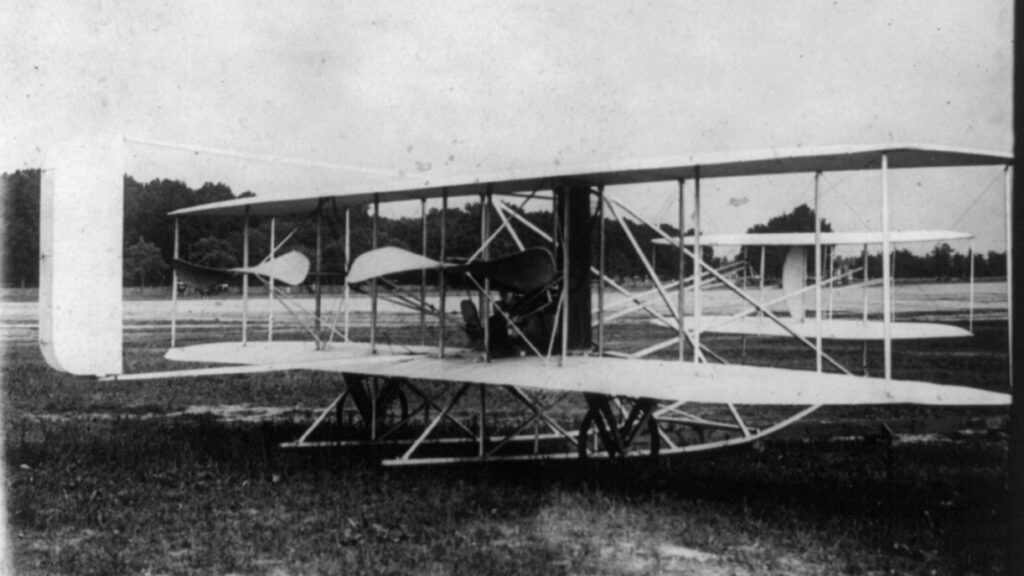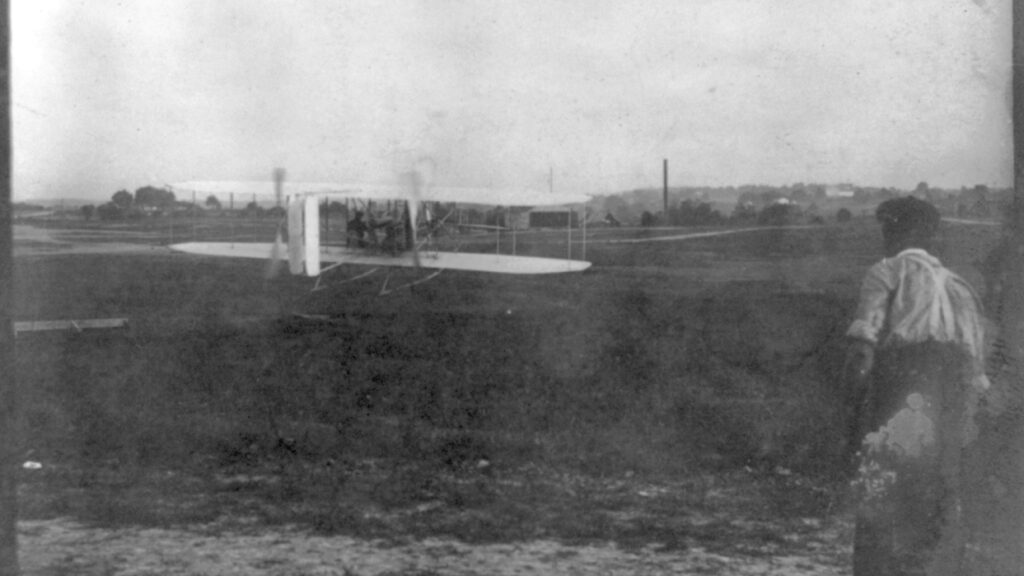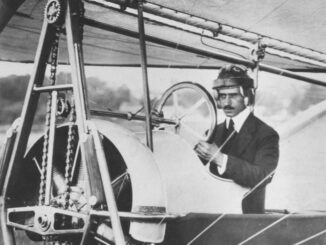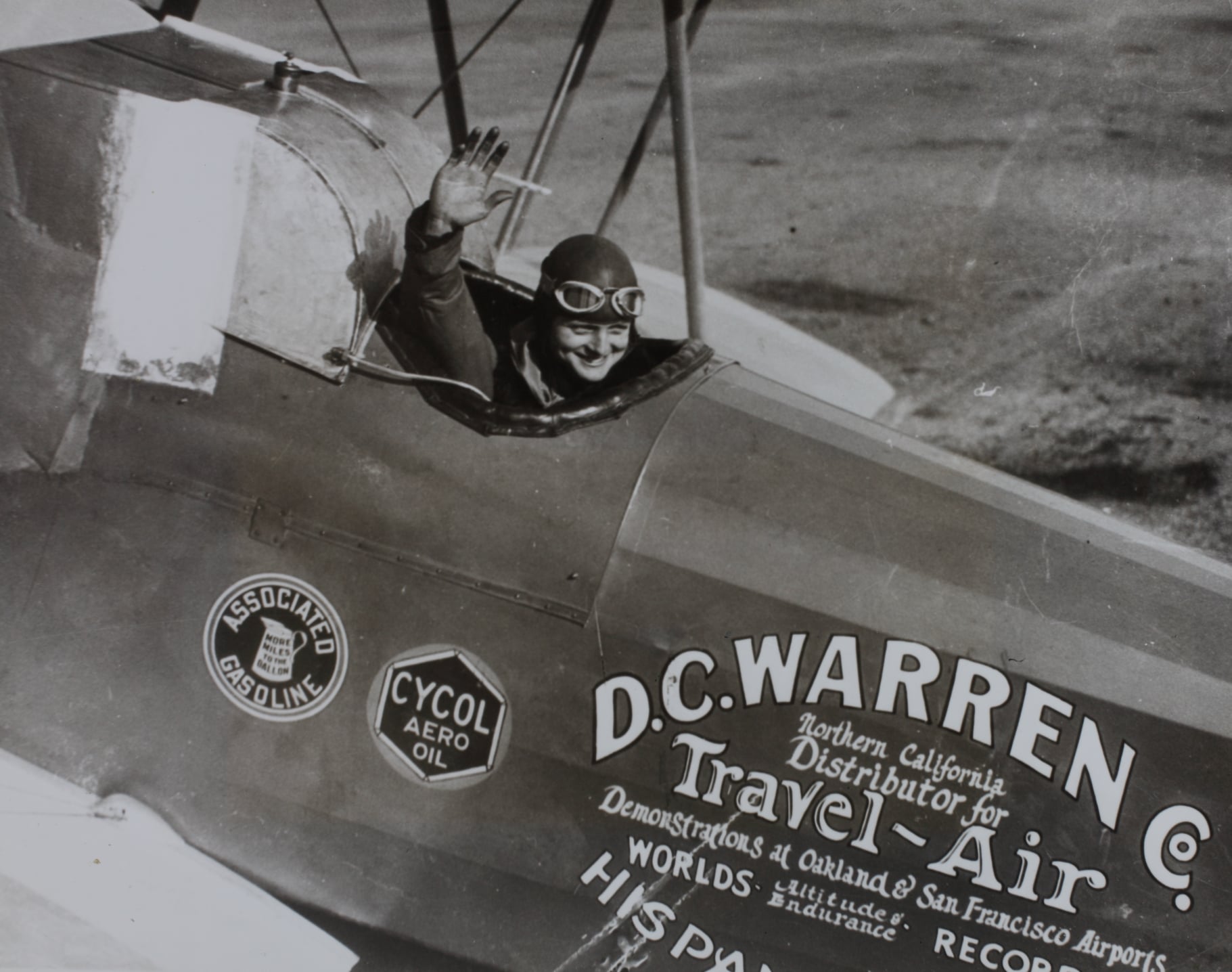 On 2nd August 1909, the first example of Wright Military Flyer was delivered to the US Army Signal Corps. Officially designated ´Signal Corps No. 1´, and commonly known as ´Aeroplane No. 1´, the Wrights´ aircraft became the first military aeroplane in the world.
On 2nd August 1909, the first example of Wright Military Flyer was delivered to the US Army Signal Corps. Officially designated ´Signal Corps No. 1´, and commonly known as ´Aeroplane No. 1´, the Wrights´ aircraft became the first military aeroplane in the world.
In June of 1909, at Fort Meyer in Virginia, Wilbur and Orville Wright presented their Wright Flyer aeroplane to the US military authorities. It was similar to aircraft the Wrights manufactured in Dayton, Ohio, between 1907 and 1909, currently known under ´Model A´ designation. It was the first Wright brothers’ aircraft made in more than one example and the first one they offered for sale.
The Wright Flyer was a biplane made in pusher configuration. Its two propellers were powered through a chain drive by a single, four-cylinder engine, generating 32 hp. The aeroplane was equipped with skid-undercarriage and for take-off it used a launching rail equipped with a counterweight.
The aforementioned military presentation of the Model A was successful. The Aeronautical Division of the US Army Signal Corps decided to buy the aeroplane for 25,000 USD (today´s equivalent of approximately one million dollars) under the conditions it would be capable to fly at 40 miles per hour (approx. 64 kph) with a crew of two on board and would be able to stay in the air for at least one hour. Those conditions were met by the Wrights and, after a series of trials, the ´Signal Corps. No. 1´ was approved for service.
Together with presenting their aircraft to the US Army Signal Corps, the Wright brothers began with training the first military pilots. On 27th July 1909, lieutenant Frank Purdy Lahm became the first one to pass the official flight test and to achieve an informal title of the ´nation´s first military aviator´. An interesting fact is that about one year earlier, Lahm already flew with Orville Wright as a passenger, becoming the first US military officer to fly in a powered aeroplane.

Lieutenant Frederick Erastus Humphreys was the second US military pilot trained by the Wrights. On 26th October 1909, he became the first US Army aviator to perform a solo flight in a powered aircraft.
Although the official contract obliged the Wrights to train only two Signal Corps pilots, Wilbur Wright also gave a few flying lessons to Benjamin Delahauf Foulois. In fact, the officers assigned to the flying course were Lahm and Foulois, but in September of 1909, the latter was deployed to France and replaced with Humphreys.
Foulois returned to the United States at the end of October, just in time to witness his colleagues attending the flying lessons. Nevertheless, Wilbur Wright decided to include Foulois in the final stage of the training, In result, Foulouis spent about three hours at the controls, being the third US military representative to receive flying lessons, although without performing any landings or solo flight.
On 5th November 1909, Humphreys and Lahm cartwheeled the ´Aeroplane No. 1´ during landing. The aircraft was damaged and required replacement of rudder and one wing. In result, both pilots were dismissed from flying activities and returned to their units.
Following the decision of Gen. James Allen, Chief Signal Officer of the US Army, 1st Lieutenant Foulois became the sole flyer of the ´Signal Corps. No. 1´ aircraft. In December, Foulois and the aircraft were transferred to Fort Sam Houston in Texas.
Although he completed only the basic training, Foulois quickly learned how to effectively fly the aircraft. He achieved that through trial and error and by correspondence with the Wright brothers. In addition, Foulois also invested his own money in necessary repairs.

In April of 1911, following the development of Wright Model B, the US Army retired the ´Signal Corps. No. 1´ from active service. The aeroplane was restored to original condition and soon after donated to the Smithsonian Institution, where it is being exhibited until today.
After a short assignment to cavalry unit, Frank P. Lahm continued his aviation career in the Aviation Section of the US Signal Corps. During the Great War, he joined the Air Service of the American Expeditionary Force and after the war became the commander of Air Corps Training Center. In 1931, Frank Lahm began his diplomatic career as assistant military attaché for air to France. He retired from the military in 1941, in the rank of brigadier general. Lahm died in 1963, aged 85.
In the aftermath of the crash of the ´Aeroplane No. 1´, Frederick E. Humphreys was assigned to the Corps of Engineers. Later, he joined the New York National Guard and served at Mexican border during Pancho Villa´s raids in 1916. Humphreys returned to aviation only in 1918, joining the Air Service for only about one year. In February of 1919, he was demobilized and then appointed colonel of the 102nd Army Engineers. Humphreys kept that position until his retirement in 1939. He died of a heart attack in 1941, aged 57.
Benjamin Foulois became one of founding fathers of the US military aviation. He went through all pioneering aviation activities of the 1910s, performed the first official military reconnaissance flight in 1911 and then served with the 1st Aero Squadron of the Signal Corps (being appointed its commander in 1914).
In November of 1917, Foulois became the Chief of Air Service, American Expeditionary Force in France. He finalized his aviation and military career as Chief of the Air Corps, leaving active duty in 1935. He retired after the so-called Air Mail scandal of 1934. Benjamin Foulois died in 1967, at age of 87.

Cover photo: The Wright aeroplane at Fort Meyer, 1909 (photo: Library of Congress, LC-USZ62-16716, cropped)



